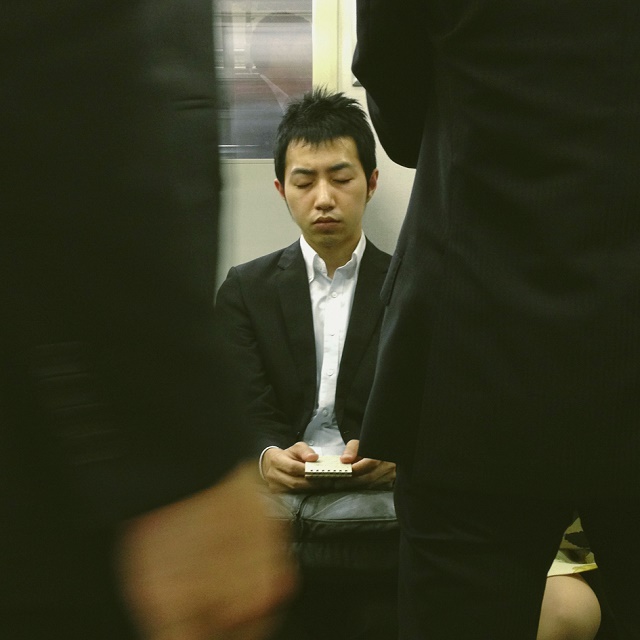
I haven’t had enough coffee today.
I really need more coffee.
We westerners often use this as a generally acceptable blanket excuse for grumpiness, sleepiness, yawning and drifting off mid-sentence…
Weird—because what we really haven’t had enough of is sleep.
Most of us know the feeling—parents of young kids and city workers know it especially well—the scratchy-eyed, heavy-lidded, thick-headed overwhelming desire to have a nap.
As a mom of two young kids, who also works full-time from home, and teaches yoga and writes wherever I can snatch a moment, I’ve had early mornings after rough nights with my boys where if offered the opportunity, I’d probably have traded a non-essential body part for just 30 minutes more sleep.
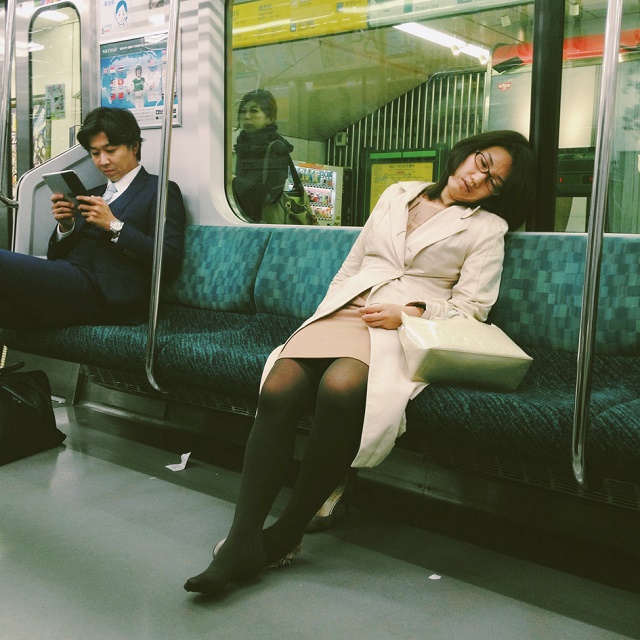
There is nothing more delicious than an afternoon nap (hell, a nap at any damn time of the day as far as I’m concerned!) and as it turns out, nothing better for our concentration and that one most sought-after quality in the West: productivity.
“Abundant research—at the universities of Loughborough, Pennsylvania, California and many others—shows the immediate and pronounced benefits of even just 10 or 20 minutes sleep on a tired mind. (That’s if you need research to tell you that sleep makes you feel better when you’re feeling sleepy.) In short it is rather odd that almost the whole world, and especially the cities where so many people spend their days, have not yet found a way to incorporate napping into the culture.” (The Guardian)
And it’s good for our health too:
“Experts in Athens, Greece, say people should [be] taking siestas. The new research, presented at the European Society of Cardiology conference in London, revealed how a daily snooze of an hour or more also cuts the need for blood pressure medications.” (The Daily Mail)
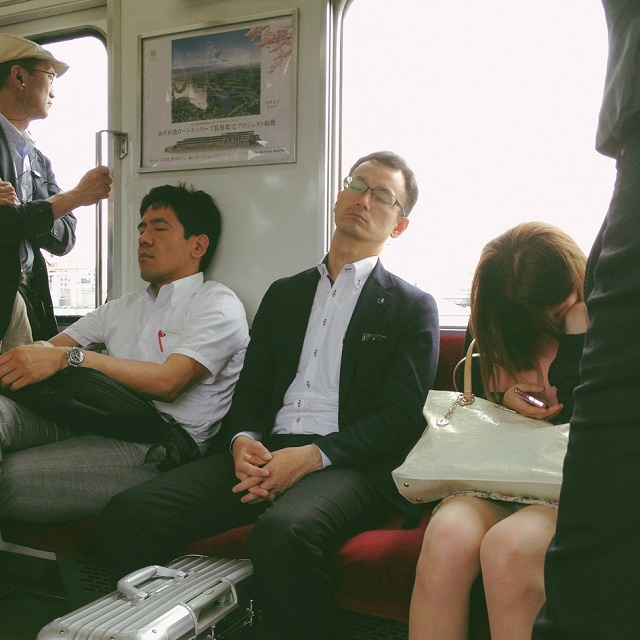
Japan is one of the most underslept nations in the world, trumped only by Korea (depending on which study you read, according to The Guardian) but they are also the greatest nappers, as an artist friend of mine discovered when he moved to Japan and found people sleeping everywhere:
“I spend about 40 minutes every day using public transport. As a commuter on the train every day with other commuters, I get to witness another part of Japanese culture being played out. At first I thought everyone had some severe sleeping disorder and I wondered how they could fall asleep in such a public space where everyone would surely be watching them. However, I soon realized that I was the only one watching.
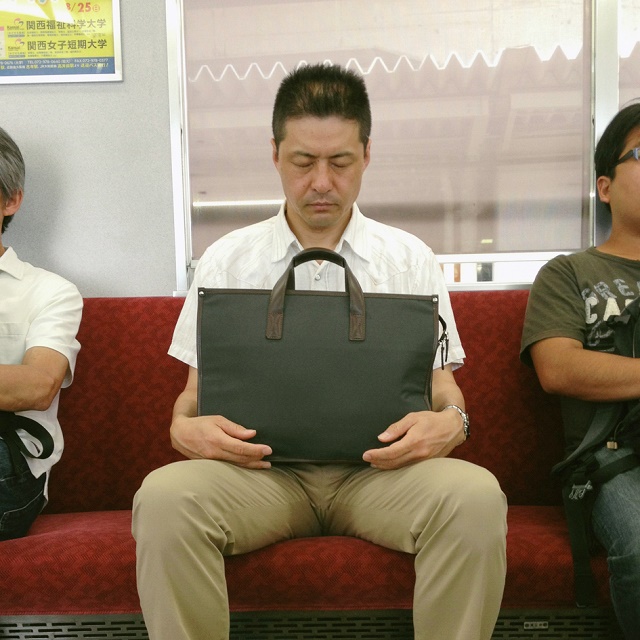
My train pictures are a reflection of the Japanese work ethic. What should be the regular 9:30–5:30pm work shift in Japan tends to end up as 12 to 14 hour shift every day. And sometimes on the weekend too! This includes high school students.
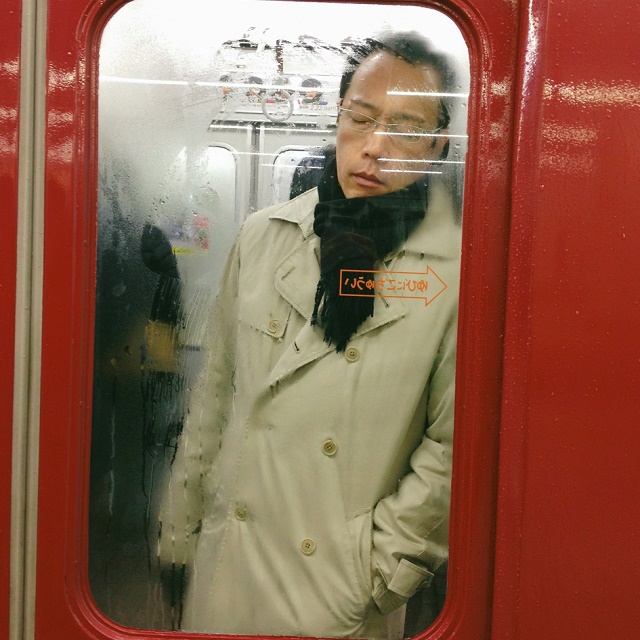
The Japanese have a remarkable ability to fall asleep just about anywhere, even standing up. They are simply aware of the importance of time and take the opportunity to rest in between demanding schedules. I enjoy recording what I see on the train every day, seeing my regular sleepy-heads and meeting new ones. Other than that i spend my time listening to podcasts and, of course, sleeping.
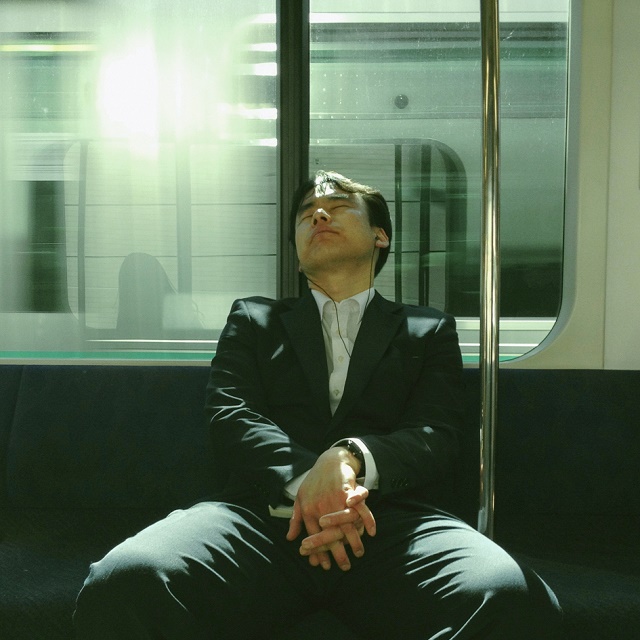
I’m sensitive and cautious in the way I take these photos of the people around me. In Japan, it is impossible to turn off the camera shutter sound on cell phone cameras to avoid voyeurism.
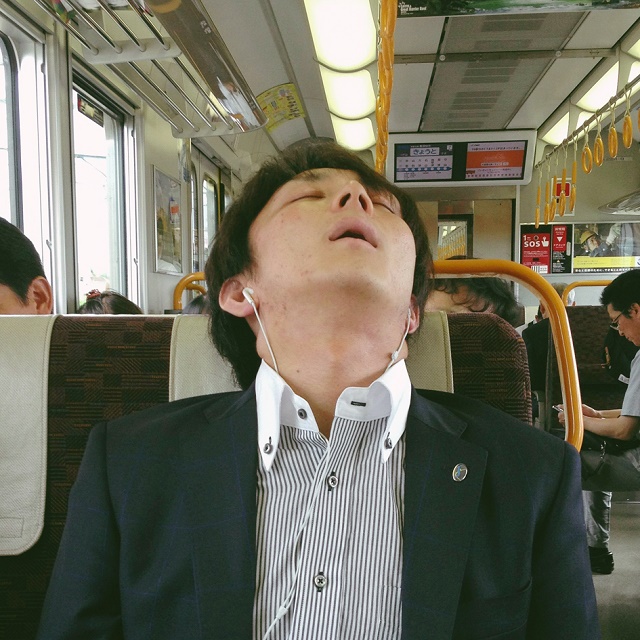
A lot of my art has dealt with death. The first photograph I took on the train was of an old man sleeping. He looked dead to me and I was compelled to take a photograph of him. I guess it was just natural for me to go back to something familiar. I’m still very interested in people at rest—be it either sleep or death.
It’s a meditation on human vulnerability and fragility.” ~ David Buchler
And for me there’s also a touch of humour in David’s pictures, which I love. He calls this series R.I.P. (rest in peace). His pictures are tongue in cheek, and so relatable—taking part of a culture, which for me and many other westerners, can seem so alien, and showing the common, ungainly, sleepy humanity in it.
If by now this practice of frequent and indiscriminate napping sounds like something for you (I know I’m in), you should note that there are strict cultural ground rules for it.
Inemuri, which literally means, “sleeping while present” is only considered acceptable if you’re upper management or at the lower end of the pay-scale (somehow middle managers miss out) I wonder where moms would fall on the management hierarchy? You can also only do it upright (no keyboard-faces or dozing in your cereal bowl allowed). You still need to appear to be “socially engaged.”
Or at least that’s what the rule book says. Some of David’s pictures tell a different story.
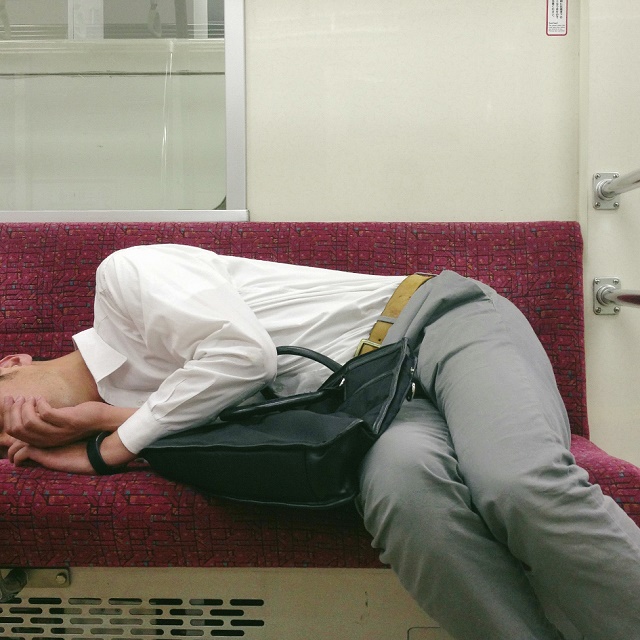
Either way, it seems we should all be a bit more Japanese about grabbing a nap wherever and whenever we can, with certain exceptions of course—like whilst driving, or operating heavy machinery, say.
I think I might just add a daily napping practice to my schedule. Hang on, I might have double-booked myself there. I’ll need to take a rain-check and I’ll definitely need more coffee.
~
See more of David Buchler’s art and reflections of life in Japan on his website, Collecting Space.
~
Relephant read:
Stressed? Overwhelmed? Take a Yogic Power Nap.
~
Author: Khara-Jade Warren
All Images: Courtesy of the artist, David Buchler
_











Read 0 comments and reply